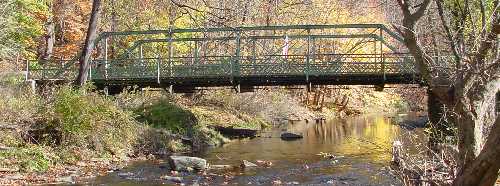

The Landenberg Bridge, a Pratt Pony Truss Bridge, was fabricated by the Schuylkill Bridge Company of Phoenixville and erected in 1899. The bridge's stone abutments were built in 1871 for the previous bridge.

The Landenberg Bridge was placed on the National Register of
Historic Places in 1988 by PennDOT along with 135 other historic
bridges owned by the state of Pennsylvania. The Landenberg Bridge
was nominated for its engineering significance, both for its
cantilevered sidewalk and for being a Pratt pony truss bridge -
an unusual style in southeastern Pennsylvania.
For 100 years the Landenberg Bridge has carried traffic across the east branch of the White Clay Creek. It is an integral part of the historic village of Landenberg and sits near to the Hotel and Store and across from the Wool House, the only remains of the once extensive Landenberg Woolen Mills.
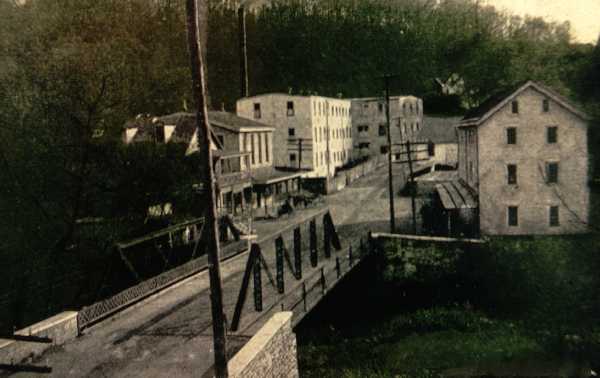
The above photograph, taken around 1905, shows the Landenberg
Bridge, the Hotel, Store, the Lund Woolen Mill, the Wool House,
and the Lower Row of five tenement houses. The Mill, the upper
floor of the Store, and the Lower Row are now gone.
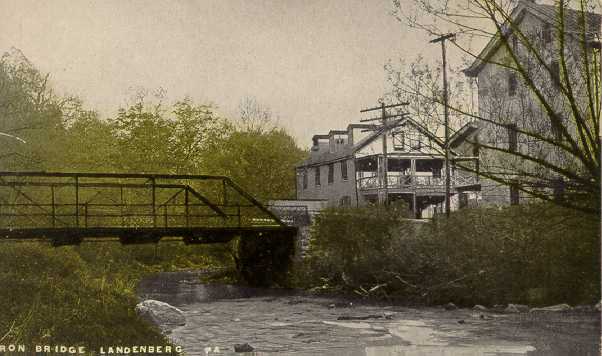
The above photograph, also taken around 1905, shows the bridge,
Hotel, part of the Store, and the Lower Row.
Before 1856, a road led down the hill and across the stream at this spot below the mill dam. Stream crossing would have been comparatively easy since most of the water in the creek was normally diverted through the two mill races, and it is not known if there was a bridge here before then or not. The first known bridge on this site was constructed in 1856. It was probably a covered bridge of the Queenpost type and was built by Ferdinand Wood for $933. In 1871 it was replaced by an iron bow-truss structure at a cost of $3190. The stonework, which is still in good condition, was done by Ferdinand Wood for $790.
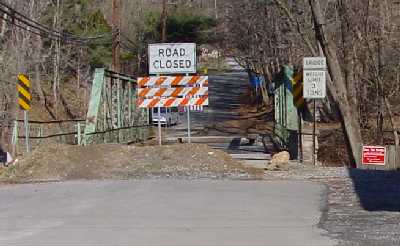
In late summer of 1999, PennDOT inspectors ordered the bridge
closed after a routine inspection found serious structural
deterioration.
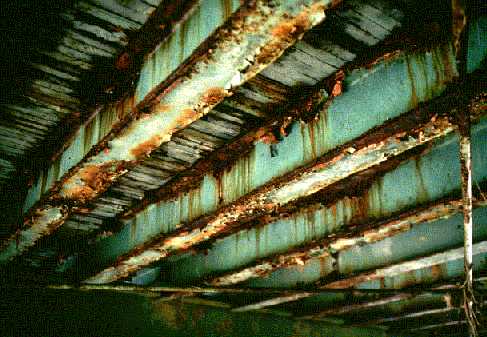
The bridge's stringers, shown above supporting the wooden deck
above it, were the most seriously deteriorated parts of the
structure. Due to insufficient PennDOT budgets for many years,
they had not been painted for a very long time, and in many
places, had rusted through completely.
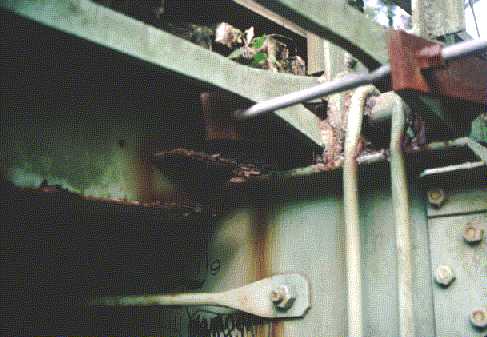
Several years prior to the closing, temporary repairs were made
in which plates were bolted over the truss pins to keep them from
bursting apart.